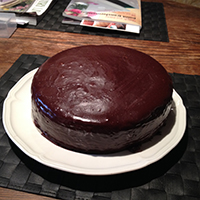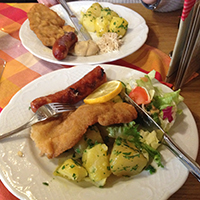“The sheer class of Austrian wines continues to amaze me. These wines are not cheap but they maintain a dazzling level of consistency.”
Jancis Robinson M.W. January 2015
Ten things about Austria;
1. Heurige – In 1784, Emperor Joseph II decreed that each Austrian vintner in the suburbs of Vienna could sell his own wine with a cold menu on his own premises without a restaurant licence, launching a tradition that continues today. Der heurige Wein refers to the “new wine” or, more literally, “this year’s wine”
2. Approximately one quarter of the 8.5 million population of Austria lives in Vienna
3. Vienna’s Central Cemetery (Zentralfriedhof) has over 2.5 million tombs (more than the city’s live population), including those of Beethoven, Brahms, Gluck, Schubert, Schoenberg and Strauss.
4. Over 60 precent of Austria’s electricity is supplied by renewable sources.
5. Austria is the only European Union nation that is not a member of NATO
6. The Austrian flag is one of the oldest national flag in the world. It dates from 1191, when Duke Leopold V fought in the Battle of Acre during the Third Crusade.
7. When the Turks fled the city of Vienna in 1683, they left behind a large quantity of coffee beans, thereby launching the great Viennese tradition of the Kaffeehaus.
8. The sewing machine was invented in 1818 by the Austrian Josef Madersperger,
9. Founded in 1752 as an animal menagerie by Emperor Franz Stephan, Vienna’s Schönbrunn Tiergarten is the oldest zoo in the world.
10. We did a Sacher Tort Comparative Tasting at both the original Hotel Sacher, and at the Demel. For what it’s worth, I preferred the Demel’s version and then made not a bad effort myself when we got home!

On this, my first trip to the Austrian Vineyards since the “Anti-Freeze” scandal of 1985, the two hour flight to Vienna was well-spent reading through “Austrian Wine in Depth”, a publication previously I picked up at the Austrian Wine Trade Tasting in London.
The International market for Austrian collapsed in 1985 just as we had shipped 20,000 litres of bulk Grants of St James’s Frankensteiner for bottling in Guildford. (At least, I seem to remember it was called Frankensteiner…) The scandal led to the rapid introduction of new laws to supervise and inspect Austrian wines, and now, thirty years later, to quote Jancis;
“The sheer class of Austrian wines continues to amaze me. These wines are not cheap but they maintain a dazzling level of consistency.”
Combining business with pleasure we are based in Vienna with our good friends cate and nick, a mere 50 minutes’ drive away from the Weinviertel which was the very first DAC (Austria’s equivalent of the French Appellation Controllee laws) to be introduced post-anti-freeze. Here the loess-dominated soli (they do keep on about loess!) result in the most characterful Gruner Veltliners (GV) and Rieslings. So what better objective to start with than these two varietals?
“Austrian Wine in depth” lays out its vision and strategy which as far as I can see can be summarised as “the opposite of what they are doing in Australia”. Take the al out of Australia and you have Austria.
So how does Al differ according to Austrian Wine in Depth?
- Austria has 46,000 hectares under vine, 1% of the world’s vineyards. Al has 164,000 hectares.
- Austria has 6000 bottlers, Al has 2000
- Austria want to be original, hand-crafted, family-run, characterful, whereas they perceive Al as commercial, industrial, corporate, uniform, technical.
I was looking forward to my first five winery visits the following day.
The town of Krems and surrounding wine villages in Niederoesterreich are , as they all told me on email and what I though was probably an exaggeration, a mere 50 minutes’ drive from the centre of Vienna, even on a working day. The area comprises over half of Austria’s planted vineyards, 46% of which grow Gruner Veltliner.
The Wachau has a real feel of Piesport about it with steep slopes terraced down to the river. In this case the wide, slow-moving Blue Danube.

Sharing a Wiener Schnitzel and Wurst with a bottle of Gruner Veltliner soon after landing!
Why buy Austrian Wine? This was a very proper question posed by Cate. When there are so many other countries’ wines already available why should you part with your hard-earned cash for these wines?
My first and immediate response was that they actually taste like no other wines on our list (with the possible, unsurprising exception of the Verus wines from just over the border in Slovenia). But do not expect dull, cheap, sickly-sweet wines like the Liebfraumilchs of the ‘70s and ‘80s.
The whole Austrian wine scene has been transformed since the Anti-freeze scandal of thirty years ago. The new identity seems to me to be epitomised by the three young passionate winemakers whose wines I am excited to showcase here.
The Gruner Veltliner (GV) grape variety is very fruity, but crisp, dry and refreshingly modest in alcohol; 12% – 12½%. The fruit is supported by minerality derived from the loess-based soils and there is a “terroir” element distinguishing the seven different examples I have shipped.
The wines are simply vinified, with nothing added or taken away, so Philip Brundlemayer’s two single vineyard GVs differ solely by the different soils and aspects of the vineyards. Philip is so single-minded in wanting his wines to be truly Austrian that his one barrel-aged wine uses only Austrian oak rather than the usual French oak.
Martin Kohl’s first vintage was in 2010 and, after studying and making wines in Napa and New Zealand he is refining GV and Riesling in Lower Austria….and, blow me down, he goes and wins Gold at the London IWC last year!
Not to be outdone, Philip Brundlmayer’s Neuburger Vordernberg 2013 was voted outright Best Wine in Lower Austria last year! Taste his 2014 here.
Heiderer-Mayer’s GV Stawanzer epitomises the terroir derived from the deep loess soils of their 25 hectares of vineyards based firmly in the Wagram region. The family has been cultivating vines here since 1844.
So, why the price differences?
All the grapes are harvested by hand (Al uses combine –harvesters!) Well, look at that terracing, you won’t get a tractor manoeuvering round those narrow terraces and steel slopes.
The harvest can start in September and finish in December. Small lots are harvested and vinified in the small, spotlessly clean stainless steel vats. The first pass produces what they call the “Klasik” wines; light and fresh. Then subsequent, later passes pick riper grapes which are higher in natural sugars, so higher in alcohol, with even more depth and intensity of flavour, some destined for oak aging, others not. Either way these “Reserve” wines are intended for drinking with food rather than on their own.
Chez Hughes we will be drinking much Austrian wine this summer, hope you will be, too!
FOOD and other things to do in Vienna
Wiener Schnitzel at Haas Beisl. They said that the pork rather than veal version was better – controversial! However, we did think it was the best of three we had over the week. Delicious washed down with a bottle Klasik GV and aided on its way with soft, steamed parsley potatoes.
Hot Chocolate and more cake at the Café Leopold Hawelka should be on your itinerary when next in Vienna. Oozing old Viennese style.
Do & Co restaurant at the Albertina Gallery. We booked a meal for 6.30 pm, not out of choice but it was the only time we could get. So, go to the museum itself for about 4.30 or 5.00 pm, spend an hour or so wandering around the superb galleries, then straight into the restaurant for an early, but top quality dinner.
Get a DVD of The Third Man, then go for a ride on the Ferris Wheel featured in the film at The Prater
There’s more to Gustav Klimt than just “The Kiss” at the Upper Belvedere Palace.

